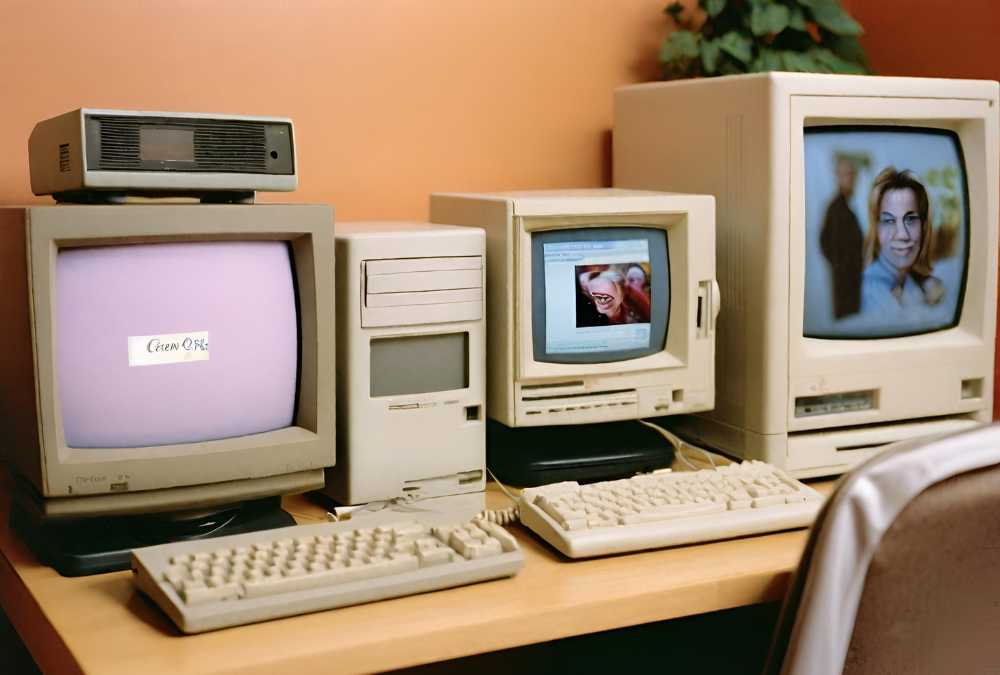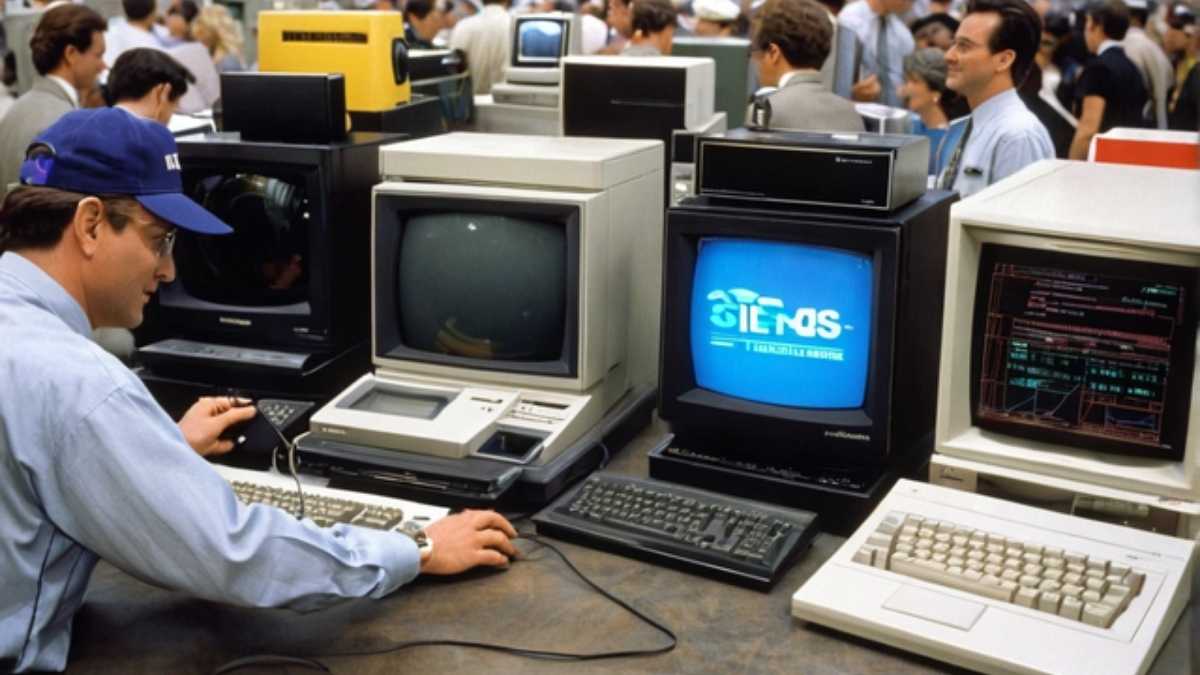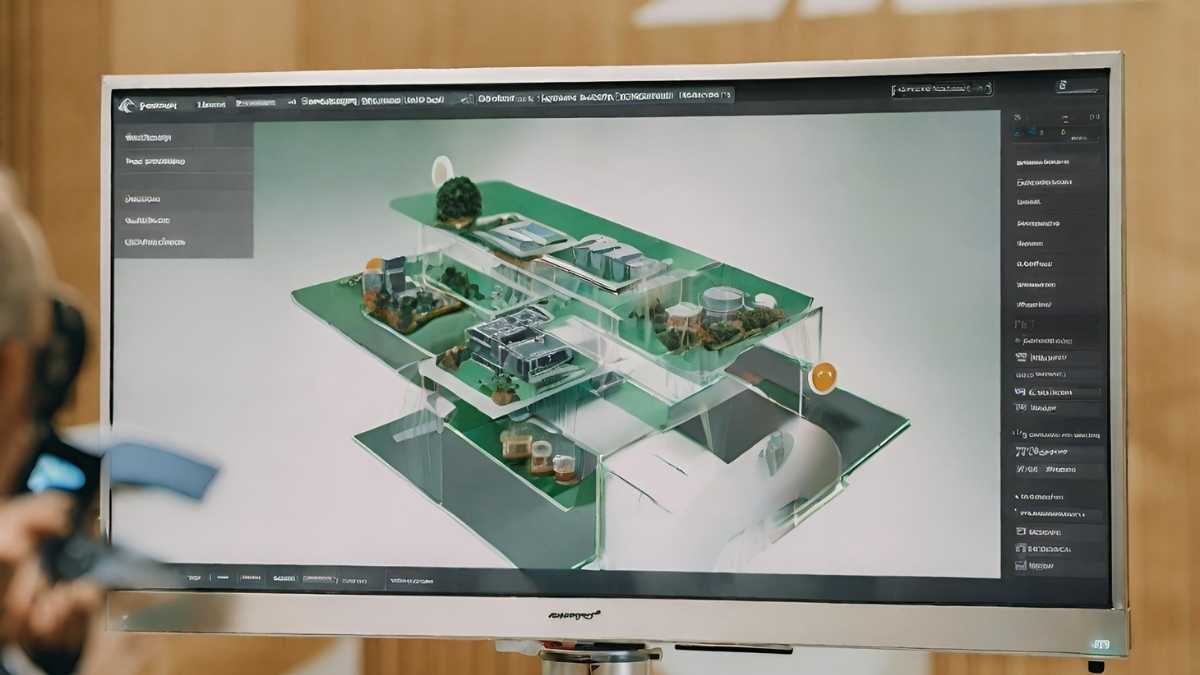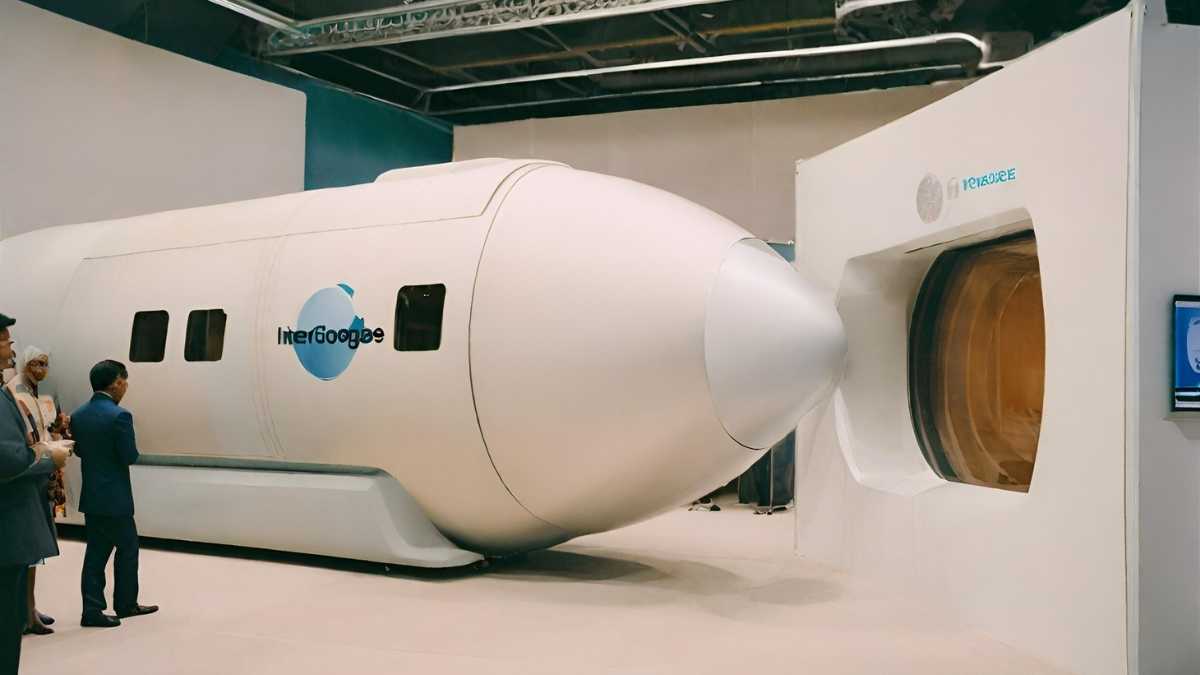The advent of the Internet and mobile phones marked the 1990s. These innovations transformed communication and information access.
The 1990s heralded a digital revolution, reshaping how society operates and interacts. The Internet emerged as a global system of interconnected computer networks, democratizing information and spawning a new era of communication, commerce, and entertainment. Mobile phones once considered luxury items, evolved into essential tools for everyday communication, becoming more affordable and accessible to the masses.
Their widespread acceptance set the stage for the future of wireless communication, laying the groundwork for the smartphones and mobile internet use we consider indispensable today. These technological leaps forward not only connected people across distances but also signaled the beginning of an always-on, instantly connected culture.

Credit: geeksaroundglobe.com
Introduction
The 1990s heralded a revolution in technology, notably with the widespread adoption of the internet. This era also saw the rapid rise of personal computers, changing the way people work, communicate, and access information.
The final decade of the 20th century was marked by rapid technological progress that forever altered how we communicate, work, and entertain ourselves. The 1990s, a pivotal era in tech history, bore witness to several innovations that not only gained widespread acceptance but also laid the groundwork for the digital age we live in today.
The Rise Of The World Wide Web
In the early ’90s, an innovation emerged that would go on to connect the planet in ways never previously imagined: the World Wide Web. Originating from the laboratories of CERN, it revolutionized information sharing and consumption:
- Tim Berners-Lee’s invention: A British physicist gave us the web, changing the face of research and communication.
- Browser breakthroughs: The introduction of web browsers like Netscape Navigator made surfing the web user-friendly and accessible to the masses.
Personal Computing Goes Mainstream
Throughout the decade, personal computers transformed from specialist tools to household essentials. Faster, more powerful, and increasingly affordable, PCs found a permanent spot in homes and offices alike:
- Affordability and performance: Falling prices and rising computing power made technology accessible to a wider audience.
- Windows 95: Microsoft’s game-changing operating system simplified home computing, embodying the spirit of the age.
Mobile Phones: From Luxury To Necessity
Once seen as a status symbol for the rich and powerful, mobile phones started to fit into the palms of everyday people during this transformative period:
- Smaller and more affordable: The evolution of mobile phones from bulky bricks to compact devices made them a practical choice for the general population.
- The beginning of the SMS era: The ability to send text messages launched a new dimension of communication that continues to influence our daily lives.
The Gaming Industry Levels Up
Video gaming leaped forward in the ’90s with the arrival of groundbreaking consoles and iconic games, establishing a thriving entertainment sector:
- Console advancements: Devices like the Sony PlayStation and Nintendo 64 changed gaming with immersive 3D graphics and diverse game libraries.
- The proliferation of PC games: The gaming world expanded with PC favorites like ‘Doom’ and ‘The Sims, creating communities and a new form of interactive entertainment.
Exploring the innovations of the 1990s offers a glimpse into the formative years of our current technological landscape. These advancements are not just relics of the past; they are the building blocks of today’s digital experiences and tomorrow’s inventions. As each breakthrough made waves across various sectors, the groundwork was laid for the interconnected, on-demand world we navigate in the 21st century.
The Rise Of The Internet In The 1990s

The 1990s heralded the widespread adoption of the internet, revolutionizing communication and information sharing. Tech advancements such as the World Wide Web and email became household staples, forever altering the global landscape.
The dawn of the 1990s heralded an era of profound transformation across the globe, a change driven largely by an explosive technological innovation: the widespread adoption of the internet. In this decade, what was once a tool exclusive to scientists and academicians began to permeate everyday life, forever altering how people interact, access information, and conduct business.
The Early Days Of The Web
Developing from a network of static pages to the vast, interactive expanse we know today, the internet’s journey through the ’90s is a tale of rapid evolution. The World Wide Web, which went live to the world in 1991, quickly became the primary means for people to browse and share information online.
This period saw:
- The creation of web browsers: Simplifying the way users navigated the online world, browsers like Netscape Navigator and Internet Explorer became gateways to digital content.
- The establishment of early online services: Products like AOL and CompuServe offered users new ways to communicate and access a growing pool of web pages and forums.
- The proliferation of home internet connections: With the introduction of dial-up services, households began experiencing the web from the comfort of their living rooms.
Connectivity And Communication
As the decade progressed, the internet grew exponentially, becoming more than just an information reservoir; it became a critical medium for communication. This section unfolds with:
- The introduction of email: Peer-to-peer communication took a significant leap with the use of email, helping people and businesses connect faster than ever before.
- The rise of chat rooms and instant messaging: Real-time online conversations flourished, thanks to platforms like IRC, AIM, and ICQ, fostering a new sense of global community.
- The advent of early social media: Though rudimentary by today’s standards, websites like Six Degrees and GeoCities laid the groundwork for the social media revolution that would later sweep the world.
Impact On Society And Business
The internet’s infiltration into society’s fabric came with profound implications for business and culture. Institutions had to adapt, giving rise to:
- E-commerce: The late ’90s saw pioneers like Amazon and eBay challenging traditional retail models, showcasing the internet’s potential as a commercial marketplace.
- Digital publishing and advertising: Newspapers and magazines began to supplement print with online versions, while advertisers recognized the web as a new frontier for reaching consumers.
- The birth of the Dot-com bubble: Over-enthusiasm in the sector led to a surge of internet-based startups, culminating in the infamous bubble that would eventually burst at the decade’s end.
Reflecting on these developments, it’s clear that the 1990s marked not just the rise of the internet, but also the genesis of the digital lifestyle that now feels so familiar. With each new connection, website, and online service, the groundwork was laid for the interconnected world we live in today.
Impact Of The Internet In The 1990s

The 1990s heralded the internet’s ascendance, revolutionizing communication and commerce. This era saw unprecedented digital innovation as internet access became a household staple, laying the groundwork for today’s connected world.
:
The 1990s was an era of significant transformation, largely due to the burgeoning presence of the internet. What started as a novelty for tech enthusiasts and academics swiftly blossomed into a foundational tool for communication, business, and information sharing. The internet’s breakthrough into mainstream society heralded a period of unprecedented connectivity, redefining the way we live, work, and play.
The Birth Of Widespread Communication
Gone were the days of costly long-distance calls and snail-mail correspondence. The Internet introduced email, instant messaging, and chat rooms:
- Email: This revolutionized communication by allowing messages to be sent and received instantly, regardless of geographical distances.
- Instant Messaging: Services like ICQ and AIM enabled real-time conversations, fostering a new culture of on-the-fly communication.
- Chat Rooms: They became virtual meeting places where individuals with shared interests could connect and exchange ideas.
Economic Expansion And E-commerce
In the ’90s, the internet wasn’t just a communication platform – it was a commercial goldmine. With the rise of e-commerce giants like Amazon and eBay:
- E-commerce Platforms: They erupted, providing a marketplace for buying and selling goods globally.
- Secure Transactions: The development of secure online payment methods boosted consumer confidence in online shopping.
- Global Reach: Companies now have the unprecedented ability to reach a global audience, changing the face of marketing and sales.
Educational Resources And Information Access
The internet became a treasure trove of data, transforming how we learn and access information:
- Digital Libraries: Academic journals, research papers, and books were digitized, greatly enhancing educational resources.
- Information Dissemination: It was faster and more efficient than ever, benefiting students, professionals, and curious minds alike.
Shift In Entertainment And Media Consumption
Traditional media outlets faced a paradigm shift as the internet began to host entertainment:
- Online Games: They connect players from all corners of the world.
- Music and Video Streaming: Emerged as a new way to enjoy media, shaking up the music and film industries.
The New Age Of Digital Marketing
The internet’s widespread adoption heralded the birth of digital marketing. Businesses understood the significance of a digital presence:
- SEO: The optimization of website content for search engines became crucial for visibility.
- Social Media: Platforms like MySpace engaged audiences and became innovative marketing tools.
There’s no denying the magnitude of the internet’s impact in the ’90s. It reimagined traditional structures and introduced a new digital era. The ongoing innovation and integration of internet technology into our daily lives remain one of the most transformative outcomes of the decade.
Widespread Adoption

The 1990s heralded the Internet’s rise to global prominence, revolutionizing how people connect and access information. As a pivotal decade, it also saw the dramatic proliferation of mobile phones, fundamentally changing communication dynamics worldwide.
The decade of the 1990s witnessed the birth and proliferation of several groundbreaking technologies that changed the way we live and communicate. From the way we access information to how we connect with people worldwide, this era marked a significant leap forward in technological adoption.
The Birth Of The World Wide Web
The 1990s saw the World Wide Web’s metamorphosis from a nascent concept to a global phenomenon. Its accessibility skyrocketed, as did the number of websites, leading to an unprecedented exchange of information.
- Creation of the first web browser: This simple yet revolutionary tool allowed users to navigate the burgeoning landscape of the internet with ease.
- Surge in online services and platforms: Companies like AOL and Yahoo! Offered gateways to the vast resources available online, providing email services, news, and a directory of the growing web.
Cellular Phones Become A Staple
Once a luxury for the high-powered business elite, cell phones quickly became a widespread necessity for the general public throughout the ’90s.
- The transition from analog to digital: This shift led to better signal quality and the foundation for future smartphone technology.
- Emergence of SMS texting: Quick, written communication via mobile devices paved the way for new forms of interaction, long before instant messaging apps.
The Emergence Of Home Computers
Personal computers transitioned from office-centric machinery to household essentials, primarily due to a reduction in prices that opened the market to a much wider audience.
- Ordination of Windows 95: This operating system’s user-friendly interface accelerated PC adoption, making technology accessible to people of all ages.
- Rise of educational and entertainment software: The immense growth of applications expanded functionality and offered compelling reasons for families to invest in a home computer.
Videogames Level Up
The video game industry transformed from pixelated arcade games to immersive home gaming experiences, as consoles became a central feature of many living rooms.
- Introduction of 3D graphics: Enhancements in gaming visuals brought about more engaging and realistic game worlds.
- Expansion of gaming audiences: With broader genres and playstyles, video games were no longer just for children, captivating the interest of adults as well.
Technological advancement in the 1990s set the stage for the modern digital age, with innovations that continued to evolve long after the decade ended. The adoption of these technologies altered day-to-day life and gave rise to a new era where information, communication, and entertainment were readily available at our fingertips.
Legacy And Continued Impact

The 1990s heralded the Internet’s meteoric rise, transforming global communication. This decade’s tech leap revolutionized information accessibility, forging paths for today’s interconnected world.
As we look back on the 1990s, it’s clear that the decade was a pivotal time for technological advancements. Not only did these innovations change the game back then, but their influence echoes through today’s digital landscape. Let’s explore how some of these groundbreaking technologies continue to shape our world.
Pioneering The World Wide Web: The Legacy Of 1990s Internet Expansion
The Internet, once a burgeoning network of information, saw exponential growth during the 90s. Its legacy can hardly be overstated, as it laid the groundwork for:
- Global connectivity: No longer confined to academic and military institutions, the Internet paved the way for global communication, transforming how we share knowledge and culture.
- E-commerce boom: Companies like Amazon and eBay, both founded in the 90s, took shopping online, revolutionizing commerce and consumer habits.
- Information democratization: Information became widely accessible, empowering individuals to learn, grow businesses, and create movements without traditional gatekeepers.
Mobile Phones: From Luxury To Necessity
The adoption of mobile phones in the 1990s reshaped personal communication, morphing from a luxury item to an indispensable tool in people’s lives. Here’s how their ongoing impact is felt:
- Communication evolution: The mobile phone transformed how we interact, facilitating instant connection and the birth of texting as a dominant communication method.
- Smart technology precursor: Early mobile phones set the stage for smartphones, blending communication with computing capabilities, which now serve as our primary access points to the Internet and digital services.
Mainstreaming Of Home Computers
The 90s saw computers moving out of the office and into our homes at an unprecedented rate. This shift left an indelible mark:
- Boosting computer literacy: With a PC in more households, a whole generation grew up digitally literate, priming the workforce for the tech-dominated job market we see today.
- Changing media consumption: Computers became a hub for entertainment, fundamentally altering how we consume and engage with media, from gaming to streaming services.
The Lasting Influence Of Video Game Consoles
Video game consoles went through a renaissance in the 90s. Their enduring impact is apparent as they:
- Paved the way for gaming culture: The rise of consoles like Sony’s PlayStation and Nintendo’s N64 cultivated a robust gaming industry and community that thrives to this day.
- Established franchises: Many beloved gaming franchises that began or flourished in the 90s remain strong, continuing to release new titles and adapt to new technologies.
With each passing year, the technologies of the 1990s grow more engrained in our societal framework, reminding us of a time of rapid change that set the stage for the world we live in today. These innovations were not mere flashes in the pan; they laid the foundations for the interconnected, tech-savvy reality that surrounds us—a testament to the era’s lasting legacy and continued impact.
Frequently Asked Questions For What Technological Innovation Saw Widespread Acceptance In The 1990s
What Did The 1990s Technological Advances Include?
The 1990s saw the birth of the World Wide Web, advancements in digital cellular phones, and the development of DVDs. Graphics and sound capabilities on personal computers improved significantly. Also, this decade introduced the mainstreaming of home gaming consoles.
Which Technological Innovation Was Most Important For Early Nineteenth Century Economic Development?
The steam engine was the most vital innovation for early 19th-century economic growth, revolutionizing transportation and industry.
Why Can We Say That Technological Innovation Was Just As Significant In Building American Cities As It Was In Driving American Industrialization?
Technological innovations propelled urban growth by enhancing transportation, like railways, and improving building techniques, mirroring their impact on industrialization through advances in manufacturing and productivity.
How Did Technological Innovation Improve The Lives Of Ordinary People And What Challenges Did It Present To Them?
Technological innovation has enhanced accessibility to education, healthcare, and communication, simplifying daily tasks. Yet, it also introduces privacy concerns and job displacement due to automation.
Conclusion
As we reflect on the 1990s, it’s clear how impactful that era was for tech advancements. From the Internet’s rise to mobile phones becoming ubiquitous, these innovations have shaped our current digital landscape. Embracing these technologies back then has undoubtedly paved the way for today’s tech-driven world.
Let’s cherish this remarkable decade for setting the foundations of our modern connectivity.




Very soon this site will be famous among all blog visitors, due to it’s nice articles